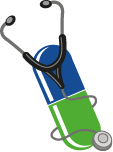Key messages for junior doctors and students
These key messages were developed as part of a toolkit aimed at promoting prudent use of antibiotics in hospitals and other healthcare settings through dissemination of evidence-based educational and information materials.
Download

Consider these messages in addition to those for the specific target groups that relate to your area of specialisation.
Things you can do
1. Learn and apply all antibiotic use and infection prevention and control recommendations that are relevant to your area of specialisation [expert consensus].
2. When you see an antibiotic prescribed, ask the prescriber about the indication, choice, dose, route of administration and duration of treatment, to understand if this is follows antibiotic guidelines [69].
3. If you see staff members at the hospital or healthcare setting who breach guidelines or protocols, ask them why they are doing so and provide them with tools to understand what they are doing wrong [69] [expert consensus].
4. Before you prescribe an antibiotic, you should [25,26,53,70] [expert consensus]:
• Seek guidance and advice from a senior colleague or a member of the antibiotic stewardship team;
• Check local, regional and national epidemiological data.
5. Document the indication of antibiotic treatment, drug choice, dose, route of administration and duration of treatment in the patient chart [31,42,70,71].
6. Answer the following key questions to optimise antibiotic therapy. If in doubt, consult with antibiotic stewardship team [31,42,53,70,71]:
a) Is there a high probability of a bacterial infection, rather than colonisation or a viral infection?
b) Have the appropriate cultures been taken before starting antibiotic therapy?
c) Have you checked for recent antibiotic use, drug allergies, use of immunosuppressive therapy, recent hospitalisation or institutionalisation, recent travel outside of Europe, and microbiology results for the previous 3 months?
d) Does the patient have an infection that will respond to antibiotics?
If yes:
i. Is the patient on the correct antibiotic(s), correct dose, and correct route of administration?
ii. Could an antibiotic with a narrower spectrum be used to treat the infection?
iii. For how long should the patient receive the antibiotic(s)?
7. Ensure that patients (and their families) understand the reason for antibiotic therapy, and key points related to antibiotic use, including to [31,69] [expert consensus]:
a) Take antibiotics exactly as prescribed;
b) Never save antibiotics for later use;
c) Never use leftover antibiotics from previous treatments; and
d) Never share leftover antibiotics with other people.

